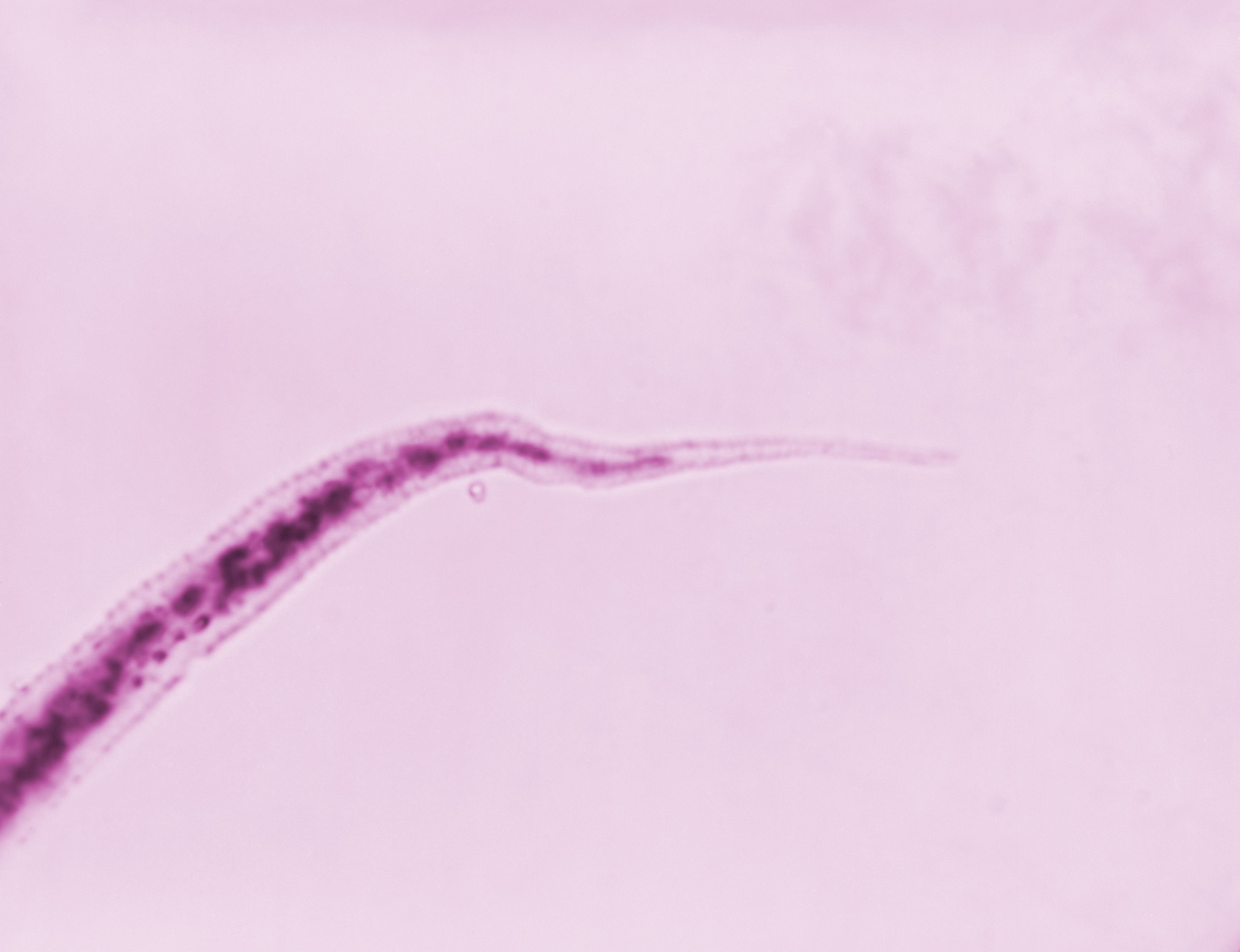My dog has ‘heatworms’ … well, maybe
This mispronunciation may elicit giggles, but our clients may actually be onto something. Here’s why veterinarians might want to turn up the heat on heartworm tests.
Photomicrograph of the tail region of a Dirofilaria immitis microfilaria (magnification, X1,700). (image courtesy of the CDC)

Your clients may be confused about the name of these deadly worms, and you might get a chuckle out of imagining little worms with heaters warming the insides of a dog, but our clients just may be onto something with this mispronunciation. We now know that adding a bit of heat may be the key to diagnosing heartworm infections. Here’s why.
Traditional heartworm tests rely on the ability to detect soluble heartworm antigen in the patient’s blood. However, some of our positive patients develop antigen-antibody complexes that block the test’s detection and cause false-negative results. This is especially problematic for patients with low worm burdens that already would have had low levels of circulating heartworm antigen. So, what can we do about it?
If we add some heat to our heartworm test samples, we can break down the antigen-antibody complexes and be able to detect those sneaky ‘heatworms.’
When to add the heat
Veterinarians should consider adding some heat—for both dogs and cats—when clinical signs of heartworm disease are present but a heartworm test result is negative. This may occur in dogs with a history of using the “slow kill” method for heartworm treatment, when chronic inflammatory problems that stimulate the immune system significantly (e.g. pyoderma) are present, or in a pet from a highly heartworm endemic area that does not have a consistent prevention history and tests negative.
According to the American Heartworm Society, heat treatment can be accomplished easily in your hospital in five easy steps:
- Step 1: Dilute the serum sample with an equal volume of 0.9% NaCl. Put the diluted serum in a glass collection tube.
- Step 2: Fill a 500-ml glass beaker with about 250 ml of tap water.
- Step 3: Microwave the beaker to the point of boiling (about two minutes in a 1,000-watt oven).
- Step 4: Remove the heated water from microwave and place the tube(s) with diluted sample into the heated water for 10 minutes. (Be sure to remove the rubber stopper before heating; some warping of the tube is expected.)
- Step 5: Repeat the antigen test.
